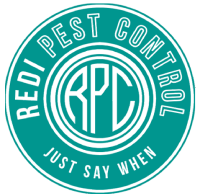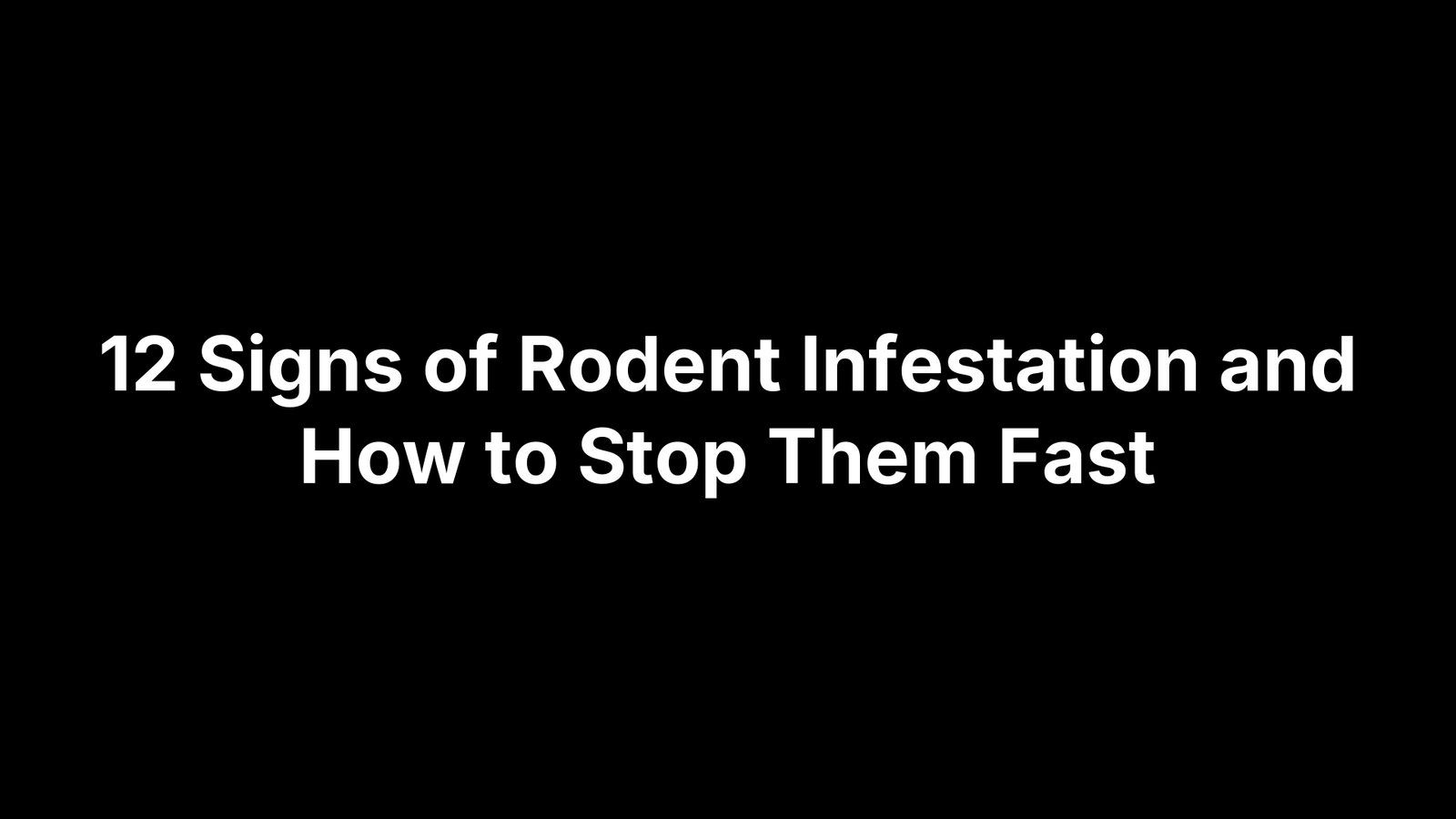If you’ve noticed mysterious rustling after dark, odd musky odors, or tiny black pellets near the pantry, you might be sharing your space with uninvited guests. Rodents don’t just rattle nerves—they contaminate food, chew wiring and insulation, and multiply quickly out of sight. The sooner you confirm what you’re dealing with, the easier (and cheaper) it is to protect your home or business and the people inside it.
This guide walks you through 12 unmistakable signs of a rodent infestation—what each sign looks like, where to check, and what to do immediately. You’ll also see how a professional inspection from Redi Pest Control can confirm activity, locate entry points, and stop the problem fast with safe, targeted treatments. Keep this checklist handy as you inspect; then take the simple next steps to shut rodents down and keep them out for good. Let’s start with the quickest way to know for sure.
1. Professional confirmation: schedule a Redi Pest Control inspection
The fastest way to confirm a rodent problem is a professional inspection. It turns suspicions into a clear, safe, and fast action plan.
What it looks like
If you see multiple signs of rodent infestation together—fresh dark droppings, new gnaw marks, greasy rub lines on baseboards, scratching after dark, and a sharp ammonia-like odor—it’s time to call.
Where to check
Check kitchens and pantries, drawers and cupboards, under sinks, along walls and baseboards, attics or crawl spaces, garages, and behind appliances.
What to do now
Don’t sweep or vacuum droppings; wear gloves and a mask, spray disinfectant, and isolate food in sealed containers. Keep kids and pets away from affected areas.
What Redi Pest Control will do
We verify mice vs. rats, pinpoint nests, droppings, runways, and entry points, then implement IPM: targeted traps/baits, exclusion (steel wool and minor repairs), sanitation guidance, and scheduled follow-ups to ensure elimination.
2. Fresh droppings
Fresh droppings are the clearest, quick sign of rodent infestation.
What it looks like
Fresh droppings are dark and moist; older turn gray and crumble. Mouse droppings are rice‑like; rat droppings are larger, capsule-shaped.
Where to check
Check near food packages, in drawers/cupboards, under sinks, and along walls. Heaviest clusters mark active runways or nesting/feeding spots.
What to do now
Don’t sweep or vacuum. Wear gloves and a mask, mist with disinfectant, wipe up, double‑bag, wash hands, and secure food in sealed containers.
What Redi Pest Control will do
We confirm species/activity from droppings, then treat hotspots with IPM—precise trapping/baiting and exclusion. Follow‑ups verify success by the absence of new droppings.
3. Gnaw marks on wires, wood, and packaging
Rodents chew constantly, so fresh gnawing on wires, wood, or food packaging is a telling sign of activity.
What it looks like
Fresh marks are pale and rough; older ones darken. Smaller, fine tooth marks suggest mice; wider, deeper gouges point to rats.
Where to check
Check food boxes, baseboards, cabinet corners, stored cardboard, behind appliances, garages, and along visible wiring.
What to do now
Unplug any appliance with chewed wires. Seal food in hard, tight containers, clean crumbs, and set traps along walls near gnaw sites; for rats, pre-place traps unset first.
What Redi Pest Control will do
We confirm species from gnaw patterns, deploy targeted traps/baits, seal gnawed openings and utility gaps, and follow up to ensure chewing stops.
4. Greasy rub marks along walls and baseboards
Rodents hug walls, leaving greasy rub marks from oily fur. Dark, continuous smudges signal active runways and heavier traffic.
What it looks like
Thin gray‑to‑black smears on paint or baseboards; fresh is dark and smeary, old fades. Often beside droppings.
Where to check
Baseboards, behind appliances, stair edges, garage walls, around utility holes, and door or foundation gaps.
What to do now
Mark spots, disinfect. Place snap traps flush to walls at rub lines; for rats, pre‑place traps unset first.
What Redi Pest Control will do
We map runways, place species‑specific traps, seal entry points, and verify success as new smudges stop.
5. Tracks and tail drags in dust or powder
One of the most overlooked signs of rodent infestation is tracks and runways. Rodents follow the same “highways” along walls, and fine dust—or a thin layer of powder you place—can reveal their footprints and sometimes a faint line between them. Use a flashlight or blacklight held at a low angle to spot fresh activity quickly.
What it looks like
Small footprints and smudges hugging walls; powder reveals crisp prints and defined runways.
Where to check
Dusty baseboards, behind appliances, basements/garages, attic surfaces, pantry shelves, and quiet corners.
What to do now
Lightly dust with flour or baby powder to verify. Photograph, then place traps flush to walls at the tracks; wear PPE and disinfect if droppings are present.
What Redi Pest Control will do
We map runways with angled light/UV and tracking dust, set species‑specific traps (pre‑bait for wary rats), seal entry points, and confirm success by the absence of new tracks.
6. Nests made of shredded paper, fabric, or insulation
Rodents build compact nests from whatever’s handy—paper, fabric strands, insulation, even dried plant matter. A nest means nearby food and water and often an active litter, so treat it as a high-priority hotspot. If you find one, you’ve confirmed one of the most reliable signs of rodent infestation.
What it looks like
Tennis‑ball to football‑sized clumps in hidden cavities; shredded materials laced with droppings, nearby gnawing, and a stale, ammonia‑like odor.
Where to check
Behind appliances, inside cabinets, under sinks, in wall or floor voids, attics and crawl spaces, stored boxes, and warm spots near pipes or insulation.
What to do now
Don’t sweep or shake. Wear gloves and a mask, mist with disinfectant, bag and discard the nest, then sanitize. Secure food and set traps along nearby walls.
What Redi Pest Control will do
We locate and safely remove nests, deploy targeted traps/baits, seal entry points with durable materials, and schedule follow‑ups to ensure the colony is eliminated.
7. Scratching and scurrying noises after dark
Mice and rats are nocturnal, so scratching, scurrying, or squeaking after dark is an early warning of hidden activity.
What it looks like
Light scraping in walls or ceilings, quick patter along baseboards, and squeaks that pause when you enter.
Where to check
Behind cabinets, under sinks, attics, crawl spaces, basements, garages, and behind appliances by pipes or wiring.
What to do now
Note time and location. Set snap traps flush to walls near sounds; keep kids and pets away. Secure food, clean crumbs.
What Redi Pest Control will do
We verify species and hotspots, deploy targeted traps/baits, seal entry points, and confirm results with follow‑ups.
8. Urine stains and strong ammonia-like odors
A sharp, stale ammonia-like odor is a classic sign of rodent infestation. Urine stains/pools confirm active runways and nests.
What it looks like
Dark, damp spots that glow under UV light, often beside droppings or rub marks. Mice can create concentrated urine spots.
Where to check
Along baseboards, under sinks, behind appliances, pantry corners, basements, attics, crawl spaces, garages, and around utility penetrations and floor edges.
What to do now
Ventilate and keep kids/pets out. Wear gloves and a mask; mist disinfectant before wiping. Bag waste, wash hands, place traps along walls.
What Redi Pest Control will do
We trace urine trails with angled light/UV, target hotspots with traps/baits, seal nearby entry points, and guide sanitation. Follow-ups verify no new odor.
9. Pets acting alert, pawing, or staring at walls
Pets notice pests first. Sudden fixations—staring at walls, pawing under appliances, anxious sniffing—often flag active rodent runways or nests.
What it looks like
Focused staring, pawing, sniffing, or whining at baseboards, ovens, fridges, or cabinets—often spiking at night.
Where to check
Behind/under appliances, under sinks, near wall voids by pipes or wiring, pantries, garages, attics, crawl spaces.
What to do now
Inspect the exact spot with a flashlight. Keep pets out, set traps flush to walls, and secure food.
What Redi Pest Control will do
We use pet cues to pinpoint hotspots, deploy species‑specific trapping, seal entry points, and verify activity stops.
10. Chewed holes and new openings in walls or floors
New holes in drywall, baseboards, or cabinet kick plates are red flags—rodent entry points often flanked by fresh debris, rub marks, and nearby droppings.
What it looks like
Ragged, gnawed edges on drywall or wood; fresh damage looks pale and dusty, often widening over time.
Where to check
Baseboards, behind appliances, under sinks, around utility lines, pantry corners, garage thresholds, attic/crawl‑space hatches.
What to do now
Stuff small gaps with steel wool, then cover with a hard patch. Place traps flush to walls near openings; secure food; wear gloves and a mask.
What Redi Pest Control will do
We find all entry points, perform rodent‑proof exclusion, target runways with traps/baits, and verify elimination with follow‑ups so no new damage appears.
11. Burrows outdoors or under decks, sheds, and foundations
Outdoor burrows are easy to miss, but they’re major signs of rodent infestation. Rodents tunnel to nest and travel, often staging just outside the structure before moving indoors for food and water.
What it looks like
Open holes with loose, freshly disturbed soil; narrow, packed paths leading to hiding spots; nearby droppings or rub marks along the foundation.
Where to check
Under decks and sheds, along foundations and slabs, beside AC pads, woodpiles, dense groundcover, compost areas, trash enclosures, and fence lines.
What to do now
Keep kids and pets away. Tighten garbage lids, reduce leaf piles/deep mulch, turn compost to cover new scraps, and pause bird feeding or use huskless seed. Don’t collapse holes yet—schedule an inspection.
What Redi Pest Control will do
We identify active burrows, map exterior runways, deploy tamper‑resistant stations and traps, harden the building perimeter with exclusion, and guide habitat cleanup, then confirm activity has stopped with follow‑ups.
12. Daytime sightings or frequent encounters
Seeing mice or rats in daylight is a red flag—because they’re nocturnal, daytime sightings usually signal a larger, established population needing fast, professional control.
What it looks like
Daylight scurries across floors, countertops, or garage paths; repeated encounters in the same spots within days.
Where to check
Kitchens/pantries, utility rooms, garages, basements, along walls to food storage, and near trash or pet‑feeding areas.
What to do now
Note times/locations, restrict access, hard‑seal food, and place snap traps flush to walls on travel routes.
What Redi Pest Control will do
We confirm species and severity, deploy targeted traps/baits (pre‑bait for rats), seal entry points, and verify elimination with follow‑ups.
Keep rodents from coming back
You’ve confirmed the signs—now lock rodents out for good. Consistent prevention beats repeat infestations every time. Use these simple, proven habits to remove food, water, and shelter while closing off entry points that invite mice and rats back in.
- Seal entry points: Plug small holes with steel wool and patch wall gaps; tighten utility penetrations and door thresholds.
- Control food and water: Store food in hard, sealed containers; fix leaks; keep kitchen trash in tight‑lidded cans; wipe crumbs daily.
- Tidy outdoors: Remove leaf piles and deep mulch near the foundation; turn compost to cover new scraps; pause bird feeding or use huskless seed.
- Reduce clutter: Clear cardboard piles and crowded shelves that offer nesting cover.
- Inspect monthly: Look along walls for fresh droppings, gnawing, rub marks, or odors and act quickly if you spot anything new.
If activity returns—or you want it handled start to finish—our technicians can inspect, seal, and eliminate fast. Book your visit now: Redi Pest Control.


